Happy International Women’s Day!
May Mary, the Holy and Great Mother of God intercede for all women and inspiring them in living out their vocation!
Happy International Women’s Day!
May Mary, the Holy and Great Mother of God intercede for all women and inspiring them in living out their vocation!
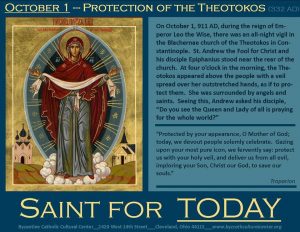
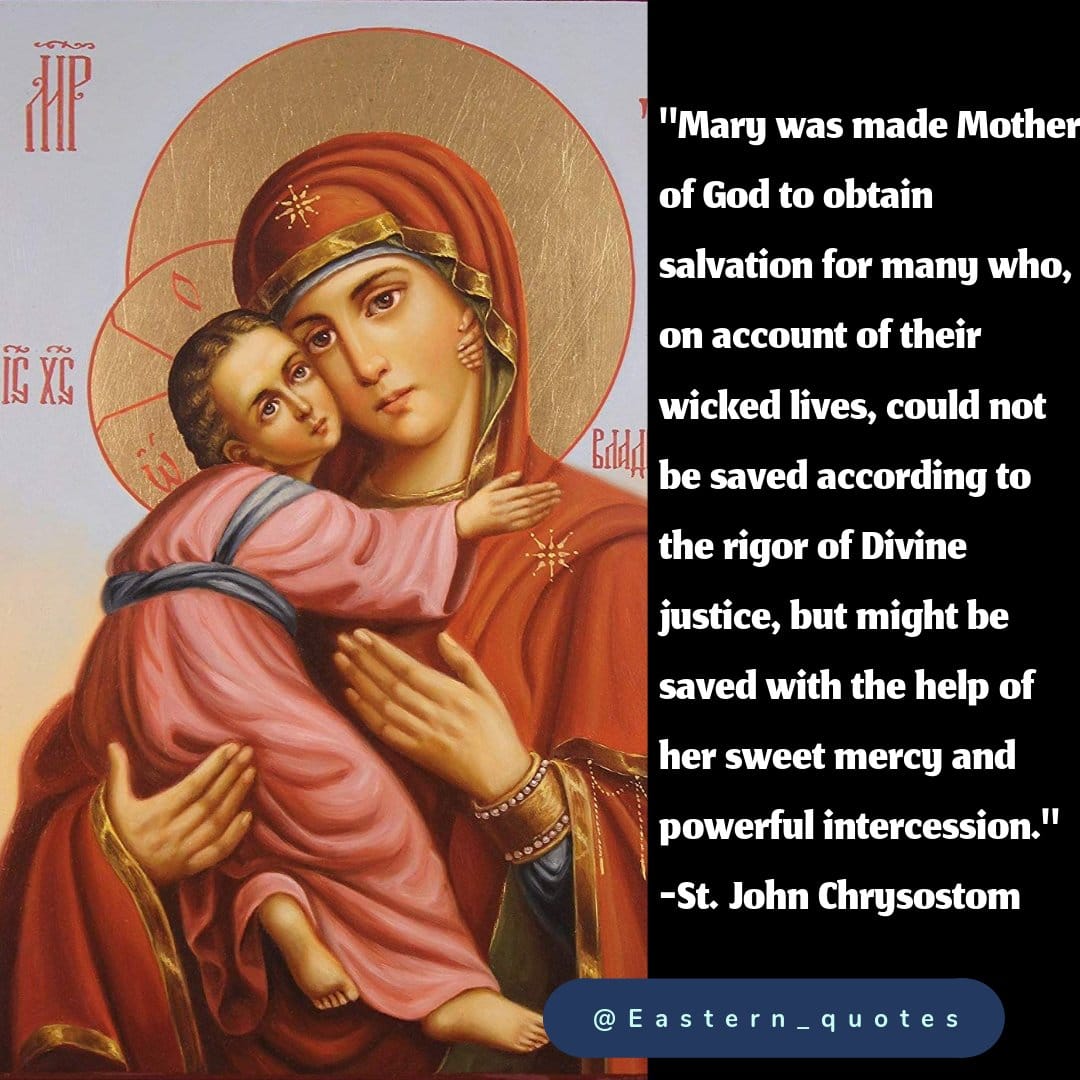 All the faithful come before you
All the faithful come before you
Mary, look upon us
O Mary, mother of our God
Rejoice, O purest mother
Virgin, we beseech you Promise
We hasten to your patronage
When the angel came
Where our Mother reigns in.
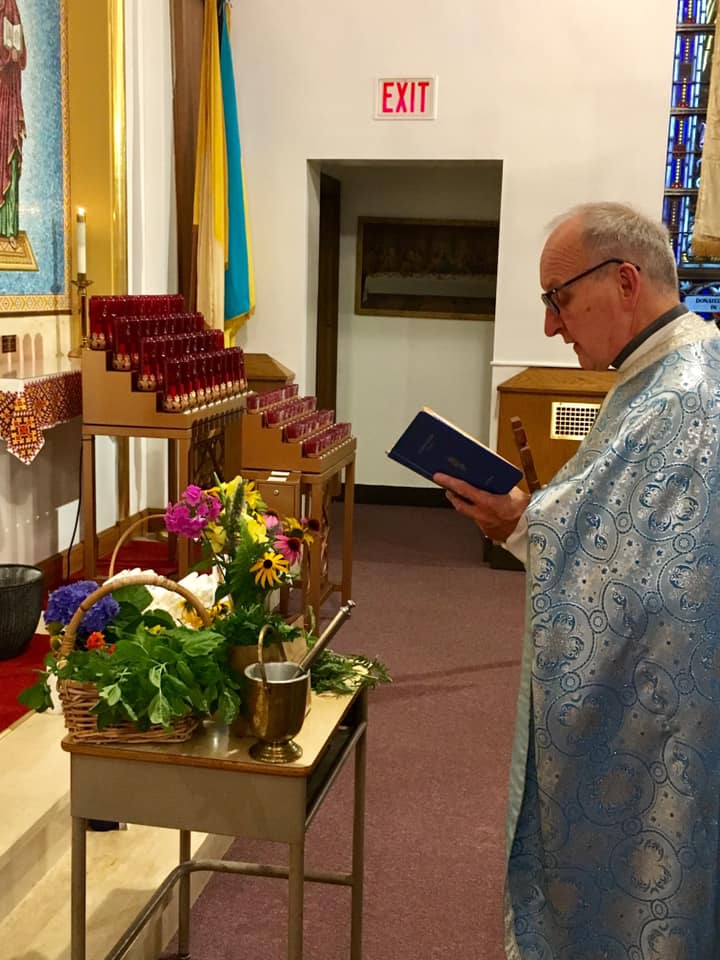 Father Paul Luniw served the Divine Liturgy and blessed flowers and herbs for the Dormition Feast. Father Stepan did similarly at the morning Liturgy.
Father Paul Luniw served the Divine Liturgy and blessed flowers and herbs for the Dormition Feast. Father Stepan did similarly at the morning Liturgy.
“While she lived on this earth,, Mary could only be close to a few people. Being in God, who is close to us, actually, “within” all of us, Mary shares in this closeness of God. Being in God and with God, she is close to each one of us, knows our hearts, can hear our prayers, can help us with her motherly kindness and has been given to us, as the Lord said, precisely as a “mother” to whom we can turn at every moment.” Benedict XVI
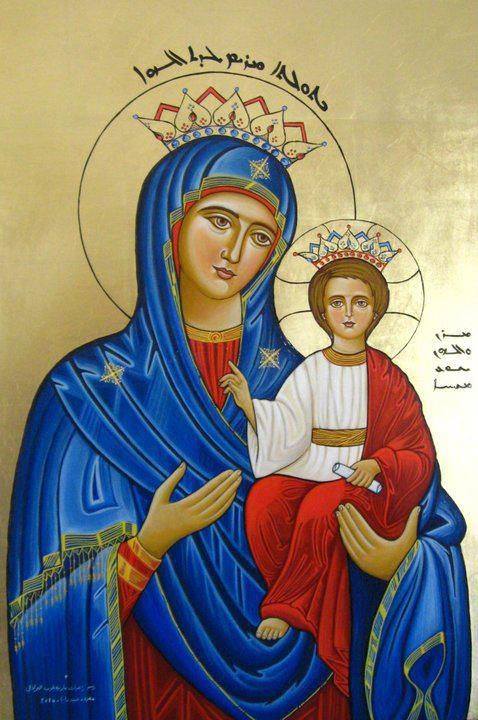 The month of May is traditionally known on as the Month of Mary. The Church holds Mary in the highest esteem; she is venerated but not worshipped by Catholics and Orthodox. A Syrian Father, St Ephrem, –the Harp of the Holy Spirit– the fourth century hymnographer, theologian and deacon as something to offer about the Mother of God.
The month of May is traditionally known on as the Month of Mary. The Church holds Mary in the highest esteem; she is venerated but not worshipped by Catholics and Orthodox. A Syrian Father, St Ephrem, –the Harp of the Holy Spirit– the fourth century hymnographer, theologian and deacon as something to offer about the Mother of God.
“As lightning illuminates what is hidden, so also Christ purifies what is hidden in the nature of things. He purified the Virgin also and then was born, so as to show that where Christ is, there is manifest purity in all its power. He purified the Virgin, having prepared Her by the Holy Spirit… having been born, He left Her virgin. I do not say that Mary became immortal, but that being illuminated by grace, She was not disturbed by sinful desires”
“Most holy Lady, Mother of God, alone most pure in soul and body, alone exceeding all perfection of purity… alone made in thy entirety the home of all the graces of the Most Holy Spirit, and hence exceeding beyond all compare even the angelic virtues in purity and sanctity of soul and body… my Lady most holy, all-pure, all-immaculate, all-stainless, all-undefiled, all-incorrupt, all inviolate spotless robe of Him Who clothes Himself with light as with a garment… flower unfading, purple woven by God, alone most immaculate.”
“There is in you, Lord, no stain, nor any spot in your mother.”
“You Jesus and your mother are the only ones who are beautiful in all aspects. Because in you, O Lord, there is no deformation, and in your mother, there is no stain.”
“The two women were pure and simple, Mary and Eve. One of them, however, became the cause of our death and the other, the cause of our life.”
St. Ephrem the Syrian
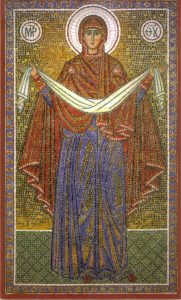 There is only one God, one Creator, one Savior, one Redeemer. Yet this one God has chosen to be friends with his creation. As St. Paul told us, he humbled himself to become a man, like us in every way except sin. There are many ways he could have become a man, but he chose to be born of a woman who in her human nature, accepted completely the will of God, so that through her God could enter into our time and our story. Then, at Cana, it was his mother, a woman, who by her plea, guided God to make wine out of water, telling the stewards, and through them, saying to all of us, “Do whatever he tells you.”
There is only one God, one Creator, one Savior, one Redeemer. Yet this one God has chosen to be friends with his creation. As St. Paul told us, he humbled himself to become a man, like us in every way except sin. There are many ways he could have become a man, but he chose to be born of a woman who in her human nature, accepted completely the will of God, so that through her God could enter into our time and our story. Then, at Cana, it was his mother, a woman, who by her plea, guided God to make wine out of water, telling the stewards, and through them, saying to all of us, “Do whatever he tells you.”
Today, we rejoice and celebrate in this human being, who through her will, God intervened in human life to bring us salvation. This is why we can celebrate her protection, why we can sing, “Through the prayers of the Theotokos, O Savior, save us,” and why we can even pray, “Most Holy Theotokos, save us!” Glory to God, who has made us partakers in the divine nature” (2 Peter 1:4).
Meditation by Archpriest David Petras
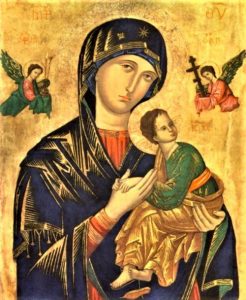 The Head of the UGCC issued a decree on proclamation of the Feast of Our Lady of Perpetual Help
The Head of the UGCC issued a decree on proclamation of the Feast of Our Lady of Perpetual Help
The Head of the UGCC, His Beatitude Sviatoslav, approved the decision about introducing the Feast of Our Mother of Perpetual Help, which was concluded by the Patriarchal Liturgical Commission and handed over to the Primate for familiarization and proclamation.
The decree of the proclamation of the Feast is issued in Kyiv, at the Patriarchal Cathedral of the Resurrection of Christ on Wednesday, June 20.
“We, by our authority, with our decree – BA 17/454 of December 11, 2017 of God – made it known to the people of God, having also decided on its celebration on the first Sunday of July. The Patriarchal Liturgical Commission was instructed to work on the liturgical texts of this holiday,” says in the document.
“In accordance with the provisions of the section” Liturgical Texts,” of the Instructions for the submission of liturgical texts, their reprints and translations (e.g., the Messenger of the Supreme Archbishop of the Kyiv-Halych UGCC 2013, p. 114), we approve and declare ad experimentum the Feast of Our Mother of Perpetual Help for the term of three years,” says in the Decree, which takes effect on June 21, 2018.
It is worth noting that the official proclamation of the holiday and celebrations on this occasion will be attended by the Metropolitans and Bishops of the UGCC, representatives of the fraternities of Our Mother of Perpetual Help of Ukraine and numerous faithful.
It should be added that on Sunday, July 1, the Head of the UGCC, His Beatitude Sviatoslav will visit Ternopil on the occasion of the pastoral visit, and solemnly proclaim the Feast of Our Mother of Perpetual Help, which the believers will celebrate each year on the first Sunday of July. The Head of the UGCC will lead the Hierarchical Holy Liturgy in the temple of Our Lady of Perpetual Help (Danylо Halytsky boulevard, 1B). The Liturgy begins at 11:00.
Department of Information of the UGCC
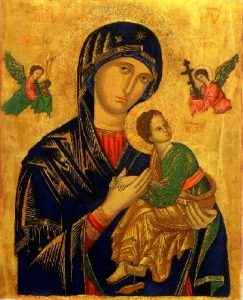 During the month of May our Ukrainian Greek Catholic Church honors the Mary the Mother of God in special prayer services as the akathist and moleben services. Mary was the humble servant of the Lord Who was always one with Her Son, our Lord God and Savior, Jesus Christ.
During the month of May our Ukrainian Greek Catholic Church honors the Mary the Mother of God in special prayer services as the akathist and moleben services. Mary was the humble servant of the Lord Who was always one with Her Son, our Lord God and Savior, Jesus Christ.
On the Cross the crucified gave John to His Mother and said: “This is Your Son!” At this moment we along with the beloved disciple John became spiritual children under the protection of His Mother Mary. Then turning to His disciple, Jesus said: “This is Your Mother!” At this moment not only John but all of us had a Spiritual Mother Who loved and cared for and about us. Mary is even now, today, our Intercessor always ready to help us, aid us in our times of need.
During the Moleben to the Mother of God we sing, pray and implore the Holy Theotokos to protect, save and keep us on the road leading to the Heavenly Kingdom saying:
“O Holy Mother of God, save us.” We refer to Mary as:
Ever-merciful Mother of God Mother of Eternal Love Mother of God’s grace Untainted Dove
Fragrant flower of incorruption
Our Intercessor before the Just Judge Comfort to those in sorrow
Refuge of sinners.
Indeed, Mary the Mother of God is ever there for us, ready to help and save those in need.”
Rev. D. George Worschak
Archeparchy of Philadelphia
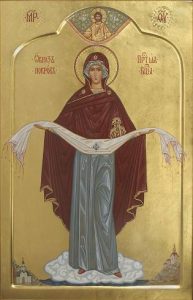 On this Sunday, we celebrate the feast of the Protection of the Theotokos. This commemorates the vision of St. Andrew, the Fool for Christ, who, during an attack, as the people kept an All-night Vigil of Prayer, saw the Mother of God holding a protecting veil over her city. We can say, then, that this feast celebrates the power of Mary, who fights on behalf of Christians, and is a mighty protector of the people. On this day we read the common Gospel from St. Luke on feasts of Mary, the story of Mary and Martha. Maybe a better gospel would be the story of the wedding at Cana in Galilee. There, at Cana, it was Jesus’ mother, a woman, who by her plea, guided God to make wine out of water, telling the stewards, and through them, saying to all of us, “Do whatever he tells you.” As his mother, she began the story of Jesus’ mission, even though he had said, “My hour has not yet come.” This truly is power given to her by God. This is still Mary’s relationship with us. She is our protector and motherly intercessor. She is the mother of all believers, for our Lord, on the cross, gave her to his beloved disciple and through him to all of us. Her message to us always, every time she appears, is “Do what my Son tells you.”
On this Sunday, we celebrate the feast of the Protection of the Theotokos. This commemorates the vision of St. Andrew, the Fool for Christ, who, during an attack, as the people kept an All-night Vigil of Prayer, saw the Mother of God holding a protecting veil over her city. We can say, then, that this feast celebrates the power of Mary, who fights on behalf of Christians, and is a mighty protector of the people. On this day we read the common Gospel from St. Luke on feasts of Mary, the story of Mary and Martha. Maybe a better gospel would be the story of the wedding at Cana in Galilee. There, at Cana, it was Jesus’ mother, a woman, who by her plea, guided God to make wine out of water, telling the stewards, and through them, saying to all of us, “Do whatever he tells you.” As his mother, she began the story of Jesus’ mission, even though he had said, “My hour has not yet come.” This truly is power given to her by God. This is still Mary’s relationship with us. She is our protector and motherly intercessor. She is the mother of all believers, for our Lord, on the cross, gave her to his beloved disciple and through him to all of us. Her message to us always, every time she appears, is “Do what my Son tells you.”
Today, we have fierce debates about the role of women in the Church. But the evidence here is for the power of women, just as Eve brought about the fall of the human race by her disobedience (Adam only ratified her decision), so Mary brings salvation into the world by her obedient decision to become the mother of God Incarnate. She said, as every Christian must also say, ““Behold, I am the servant of the Lord. May it be done to me according to your word.” And Mary receives this great power in a human way, through humility and weakness. She plays a hidden role in the Gospels and in the Acts of the Apostles, but it is through her weakness that the Christian finds strength, it is in her humility that we find wisdom, and in her death we are given the hope of life, “O Theotokos, … in your falling asleep you did not forsake the world … and through your prayers you deliver our souls from death. (Troparion of the Feast of the Dormition)